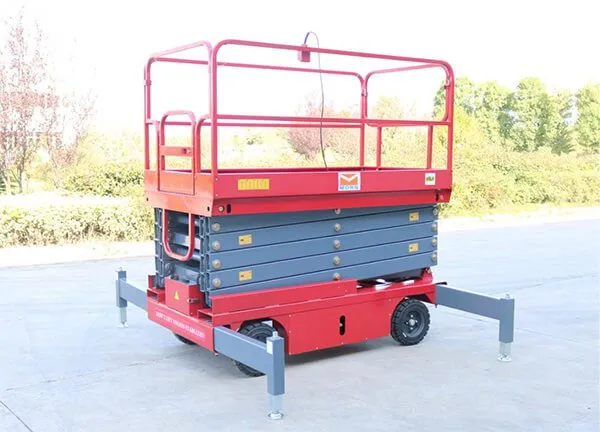Whether you’re looking to rent or purchase an aerial lift, the first thing that must be accomplished is choosing the right lift for the job at hand. There are many different types of aerial lifts, like scissor lift, boom lift, mast lift and so on available on the market. How to choose the right lift?
If you’re an expert certified aerial operator you will have no problem deciding which type of aerial lift is right for the job, but if you’re new field, here are some of suggestion for you.
Table of Contents
First let’s start by explaining the differences between the different types of aerial lifts:
Scissor Lifts
Scissor lifts have a base that is the same size as the work platform and are designed to lift personnel and their equipment vertically. Most modern scissor lifts come equipped with an extension deck that will allow a minimum of horizontal reach. Scissor lifts are typically available in platform heights that range from 15 to over 50 feet high.
Boom Lifts
Boom lifts are an excellent solution for hard-to-reach jobs and/or jobs that require considerable heights, delivering a stable and secure work platform. Boom lifts are typically available in platform heights that range from 30 to 135 feet high.
Vertical Mast Lifts
Also known as personnel lifts, these vertical elevating lifts are ideal for warehousing, stock-picking, inventory management, and general maintenance. Relatively light weight, compact and great when space is limited. They can increase your overall productivity. Available in self-propelled electric and push around options and are best used on a firm level surface such as a concrete floor.
Secondly, consider a few questions to filter the available choices:
1. Which manufacturer should I choose?
Although there are slight variations, most aerial work platforms are similar in the way they are operated. When it comes to manufacturers the choice is like choosing between Ford and Chevy. It’s primarily a consumer preference, since all aerial lift manufactures have the responsibility of building lifts that meet global safety standard.
2. Is the work to be performed inside or outside?
If the answer is inside, we will want to consider electric powered because of very low emissions, convenience and low cost.
If the answer is outside battery powered aerial lifts will be better.
3. What is the terrain like where the work is to be completed?
If the lift is intended to be operated on a firm level surface like concrete floor, electric slab scissor lifts, electric articulating boom lifts or a vertical mast lift will be best suited for the task.
If the work to be performed is outside and on undulating terrain, an engine powered telescopic boom lift, engine powered articulating boom lift or rough terrain scissor lift would be best.
4. Are there obstacles between the nearest point an aerial lift can be positioned and the work area?
If there are obstacles that would prohibit the aerial lift from being positioned directly below the work site, a boom lift will be the right choice.
If the lift can be positioned directly under the work area so that elevating vertically allows personnel to access the work site, a scissor lift will be a safe choice.
5. How high will the operator need to be to perform the task?
This should be a simple question to answer. Once we determine the needed work height we can eliminate some of the choices.
6. What is the total weight (incl. personnel) that the aerial lift needs to elevate?
All aerial lifts have a stated maximum platform lifting capacity. This can be found in the operator’s manual and on the data plate attached to the machine. Determine how many people will be needed to complete the job and what equipment the personnel using the aerial lift will need, then add up all estimated weight. The total number of pounds in the platform will help you determine which aerial lift is safe for your job.
After choose the most suitable aerial lift, your job will be finished more efficiently. If there are still questions, welcome to contact us, we could recommend the suitable lift for you.



